The Prague castle complex is the most visited tourist attraction in the Czech Republic. The earliest mentions of a castle date back to the 9th century, and it is today considered the second-largest enclosed castle complex in the world. Originally comprising just wooden defences, it has been expanded with extensive stone walls, church buildings, towers and fortifications over the centuries. Various gardens and palaces surrounding the castle are likewise open to visitors.
Prague Castle
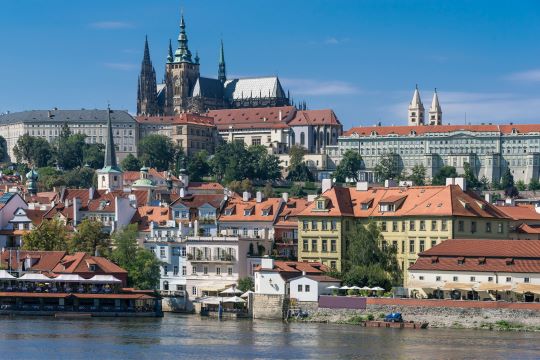
National Museum
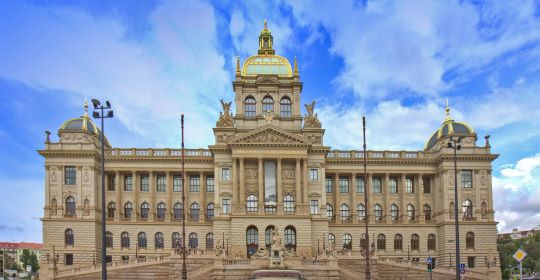
The National Museum is the country’s most important natural and cultural history museum. The main building at the top of Wenceslas Square presents not only the museum's historical-archaeological collections, which pay witness to the ancient and early history of the country’s present-day territory, but also zoological, anthropological and mineralogical exhibitions.
Wenceslas Square
Wenceslas Square is the central square of what is known as the New Town of Prague. The many cafés and restaurants which line the square are an opportunity to get to know typical Czech cuisine. Bars and clubs are furthermore your entry ticket to Prague’s nightlife.
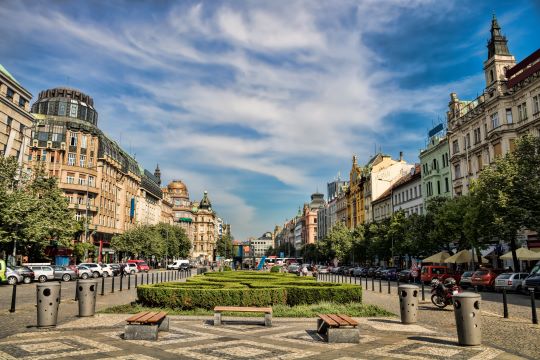
St. Wenceslas Monument
The St. Wenceslas Monument on Wenceslas Square is a popular meeting place for the people of Prague. It depicts the nation’s patron Wenceslas I, Duke of Bohemia, who is also revered as a saint. The bronze sculpture stands 7 metres high, including its base, and was created by Josef Václav Myslbek, one of the most important sculptors of his time.

Dancing House
The so-called Dancing House is famous all over the world for its daring deconstructivist style. With its twisted form and deliberately unaligned windows, the building overlooking the River Vltava can certainly be said to dance out of line amidst the more traditional architecture of its neighbours.
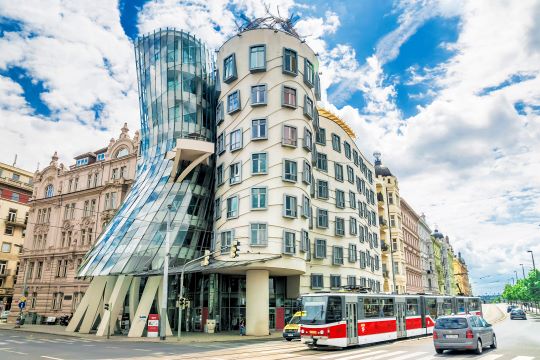
Charles Bridge
The Charles Bridge is the city's historically most important bridge. It connects the old city centre of Prague on the right bank with the Mala Strana district below the castle on the left bank. The bridge was constructed in granite and sandstone in the 14th century and is 516 metres long. It received its present name in 1870 to honour Holy Roman Emperor Charles IV. It is for many the symbol of Prague and is listed as UNESCO world cultural heritage together with the old city centre. In former times, it was customary for the coronation processions of the Bohemian kings to cross the bridge.
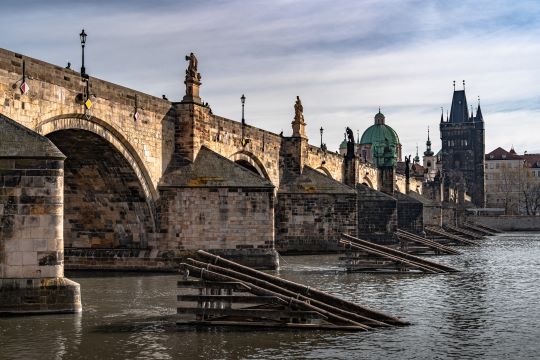
Old Town Hall and Astronomical Clock
The Old Town Hall of Prague is famous above all for its Gothic astronomical clock. The various dials display not only the clock time, but also the sidereal time, the position of the sun, the lunar phase and the current zodiac constellation. The clock dates from 1410 and is still today acknowledged as a technical masterpiece. The tower of the Old Town Hall is open to visitors and offers magnificent views across the roofs of Prague.
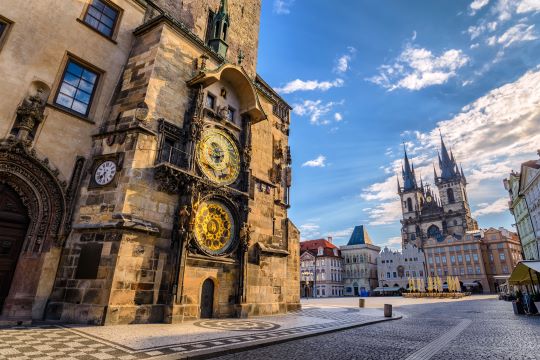
 English
English
 Deutsch
Deutsch
